CHECKLIST OF BIRDS
HOLLOMAN
AIR FORCE BASE
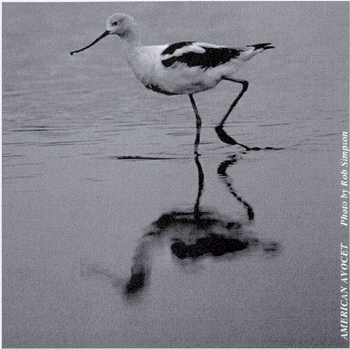
Welcome to Holloman Air Force Base! Established in 1942 as Alamogordo Army Airfield, it served as the test site for the first atomic bomb detonation at what is now known as Trinity Site. Holloman is home of the 49th Fighter Wing; aircraft are F-1 17A ‘Stealth’ Fighter squadron, the AT-38B and the F-4E. Holloman now serves as the primary testing facility for acceleration research. The famous 10 mile acceleration test track provides the main facility on site. Located 6 miles southwest of Alamogordo, New Mexico, between the Sacramento and San Andreas Mountains, Holloman is near White Sands National Monument. Military and civilian personnel total 6,000 employed on site. Also, 500 families of the German Air Force are now housed here.
Environment Flight Natural Resources program manages 60,000 acres of land. Primary habitat is Chihuahuan desert grass and shrub. While supporting the military mission, the CEV manages one of the largest remaining areas of alkali sacaton desert grassland. This unique area is home to the White Sands pupfish and a herd of African oryx! Tularosa Mountain, sacred to the Mescalera Apaches, and used as an atom-bomb proof bunker during WWII, is an excellent site for viewing Acceleration Test Sled runs.
Public access is limited to the Holloman Lake wetlands complex. Military use requirements preclude access to much of the base except with special permission. Contact the CEV Office at 505-475-3931, for more information.
BIRDS OF HOLLOMAN AFB
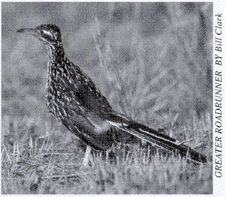
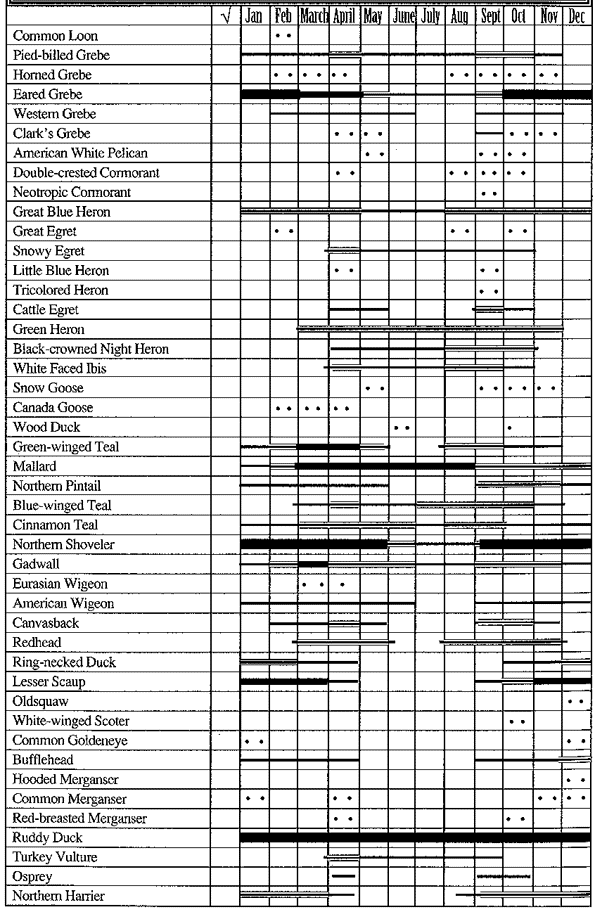
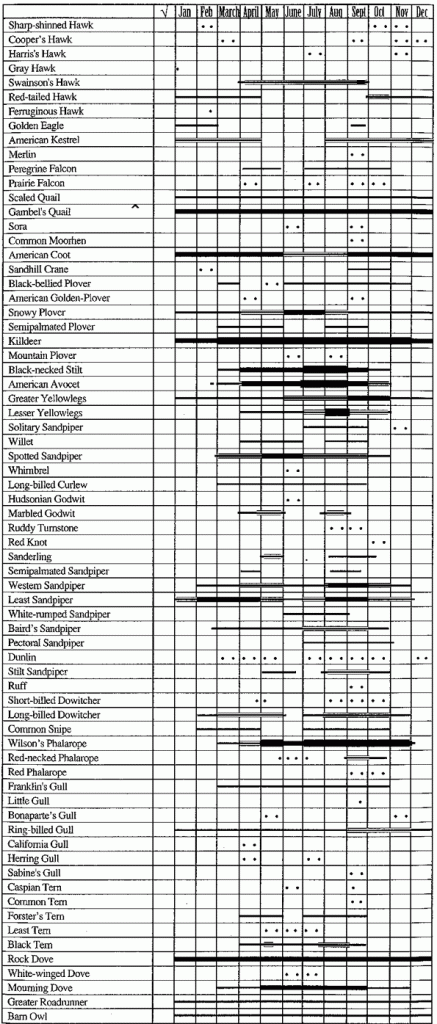
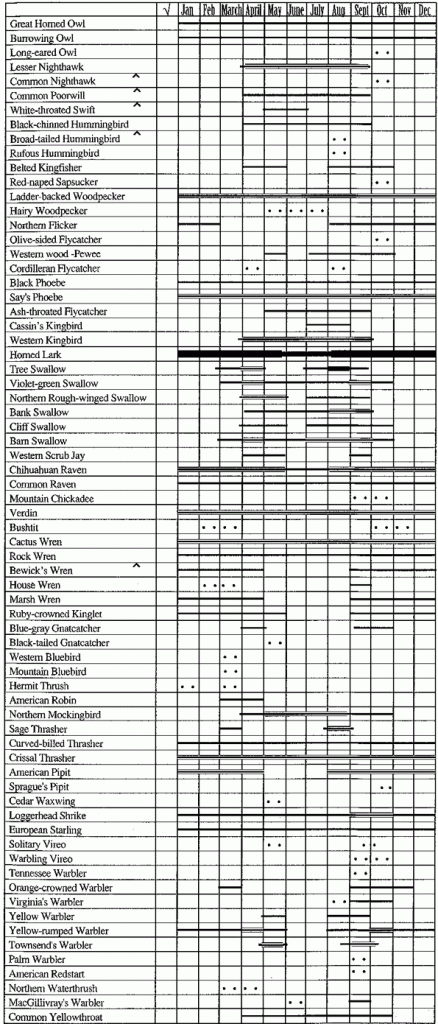
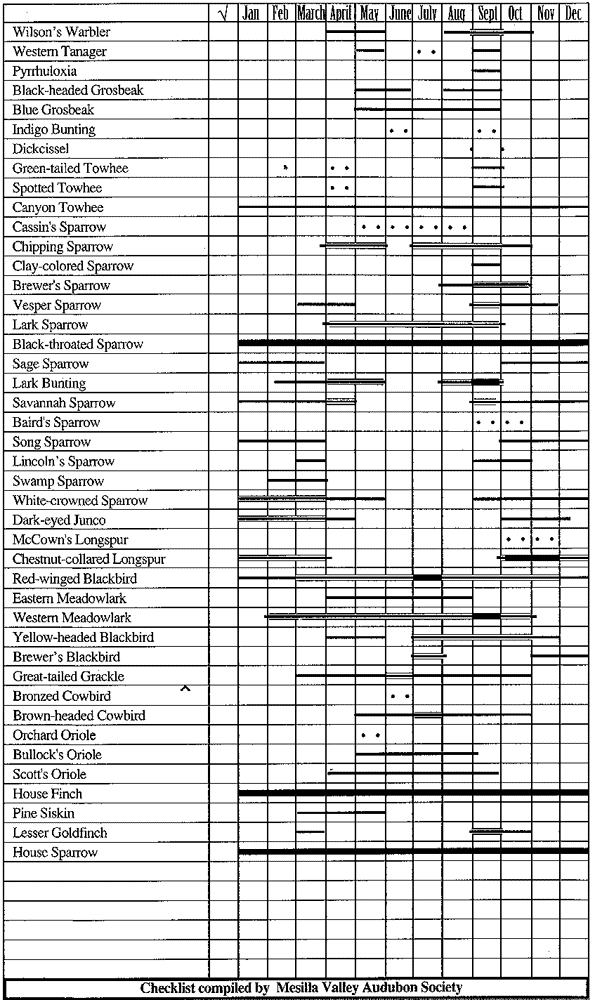

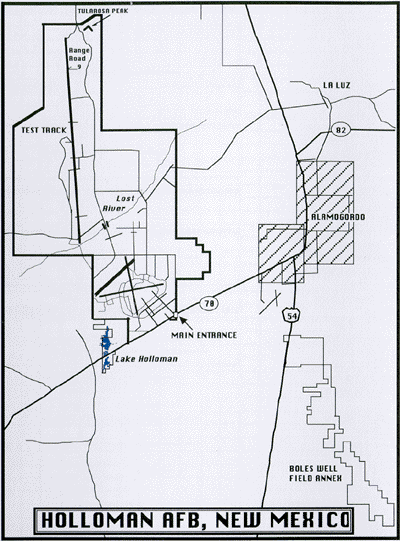
AIR FORCE RESOURCES MANAGEMENT
The United States Air Force has the responsibility of managing more than nine million acres of valuable public lands. To ensure success, the Air Force has developed a network of dedicated professionals who work in coordination with local, regional and national authorities. Their challenge is to find a balance in requirements of military mission, security and environmental habitat protection. This effort requires the cooperation and support of the Air Force and its neighbors. The primary goal is to guarantee the quality of public lands under Air Force stewardship.
Conservation programs on Air Force bases include fish and wildlife conservation, forestry, agricultural land lease, habitat management and outdoor recreation. Air Force Resource Managers and nearby communities, working together, have made great strides in fostering environmental awareness through education and cooperation.
The Air Force supports partnerships with many resource groups; Neotropical Migratory Bird Conservation, Ducks Unlimited, North American Waterfowl Management Plan. Wetlands Protection and Enhancement and the National Watchable Wildlife program. You are invited to visit Air Force lands. Come see how we are doing with our part of America.

The U.S. Air Force and Partners in Flight are cooperating on an international program to promote the conservation of migratory birds. For information, contact DoD Partners in Flight by email or call 540-349-9662.

